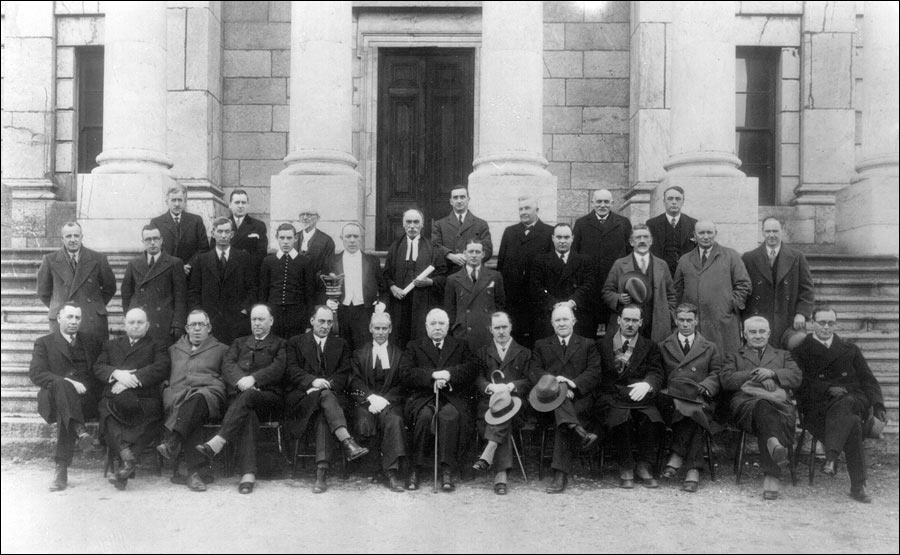Relations with Canada, 1895-1939
Newfoundland survived the financial crisis of 1894-95, maintained its independence, and soon returned to the policy which had most disturbed successive Canadian governments: the attempt to negotiate an independent trade treaty with the United States.
Robert Bond became premier in 1900, and eventually obtained permission from the British government - against strong Canadian objections - to try and arrange such a treaty. In 1902 a draft treat was negotiated, which became known as the Bond-Hay Convention. However, there were strong objections from the Massachusetts fishing industry, which put great pressure on the US Senate to reject the draft convention. In effect, this is what the Senate did.
Angered by this action, the Bond government in 1905 began to apply sanctions against American vessels coming to Newfoundland to purchase and fish for herring in the winter months. The dispute involved Canada, because the American right to fish in defined areas in both Newfoundland and Canadian waters derived from the same agreement: the Anglo-American Convention of October 1818. The Newfoundland government now sought to interpret the convention in a way that the Americans would not accept.
In the end the question of how to interpret the Convention went to arbitration at the international court at The Hague. In the hearings, Canada and Newfoundland presented a joint case, which was largely sustained by the court. But Bond did not get his treaty, and the question was not raised again.
Over the years, Canada and Newfoundland developed closer links, and it might be said that the island gradually moved from a North Atlantic to a North American orientation. Trade between the two countries increased steadily, they shared certain services, communications improved and Newfoundlanders emigrated to Canada in increasing numbers. There were disputes and discussions, of course, but usually over mundane issues such as tariffs, the mail service, subsidies, civil aviation and immigration. The one major dispute in the 1920s was the delineation of the Labrador boundary. This was decided in Newfoundland 's favour in 1927 by the Judicial Committee of the Privy Council.
With the onset of the Great Depression in 1929, matters became more complicated. By the early 1930s, Newfoundland was in such financial difficulty that it proposed to default on its debt payments. This caused consternation in Ottawa as well as London. A royal commission was appointed to investigate the situation, headed by Lord Amulree. One member of the commission was a nominee of the Canadian government. The possibility of Confederation was discussed, but there was no action taken in this direction. Instead, Newfoundland surrendered responsible government in favour of an appointed Commission of Government (1934).

With the outbreak of war in 1939, Canada became more involved with, and more interested in Newfoundland than ever before. This was because Canada became largely responsible for the defence of Newfoundland and Labrador, and Canadians came to realize their future and that of Newfoundland were inextricably linked.




